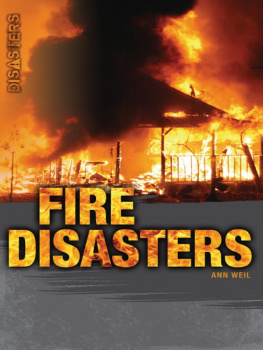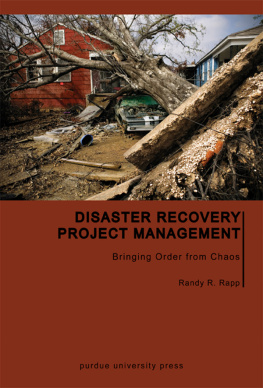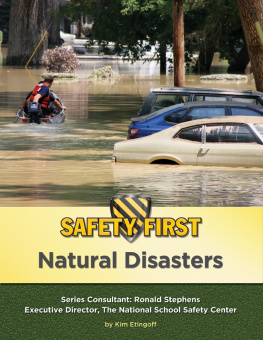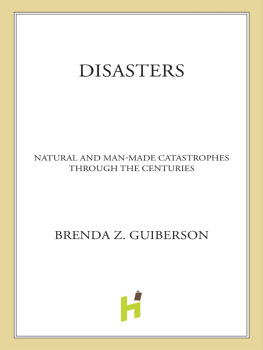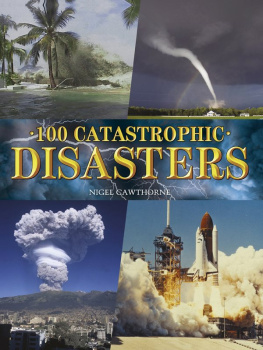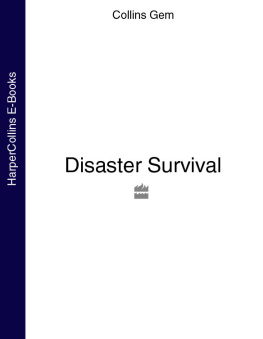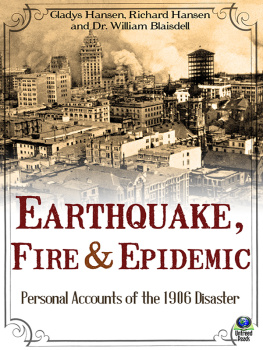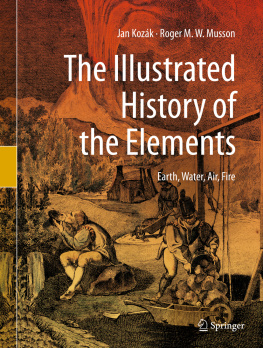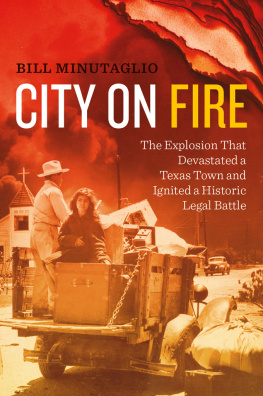



Published by Trinity University Press
San Antonio, Texas 78212
Copyright 2015 by Randy Fritz
All rights reserved. No part of this book may be reproduced in any form or by any electronic or mechanical means, including information storage and retrieval systems, without permission in writing from the publisher.
Jacket and book design by Pinafore Press / Janice Shay
Cover photograph: Bastrop wildfire, courtesy of Alexey Sergeev
Author portraits and interior images: Amanda Hartfield
Authors note: This book is a memoir about my familys experience with a historic natural disaster and its aftermath. To the extent that memory and notes can be trusted, it is an accurate description of what happened. While I didnt keep a journal, I did make voice and written notes on my smartphone about critical events immediately after they happened, and I have an e-mail and text message archive to remind me of my thoughts and activities on specific days. There are no composite or imagined characters or events. I havent changed anyones name, although in some cases I chose not to identify particular individuals.
Trinity University Press strives to produce its books using methods and materials in an environmentally sensitive manner. We favor working with manufacturers that practice sustainable management of all natural resources, produce paper using recycled stock, and manage forests with the best possible practices for people, biodiversity, and sustainability. The press is a member of the Green Press Initiative, a nonprofit program dedicated to supporting publishers in their efforts to reduce their impacts on endangered forests, climate change, and forest-dependent communities.
The paper used in this publication meets the minimum requirements of the American National Standard for Information SciencesPermanence of Paper for Printed Library Materials, ANSI 39.481992.
ISBN 978-1-59534-260-7 ebook
CIP data on file at the Library of Congress
19 18 17 16 15 | 5 4 3 2 1
To my beloved family, my never-ending seed of gratitude
Contents
At least seventy thousand wildfires happen every year in America, and most regenerate healthy forests, culling underbrush, improving the soil, and unspooling the life resting inside pinecones.
Some of them shed their better natures, mutating into something dangerous enough that heavy equipment and elite firefighters must be called in. Of those, only a few turn into criminals, taking lives and destroying homes.
But in the modern era, there have been only two wildfires, both in California, more vicious and pitiless than the one that changed my life after nearly killing me.
With the tag-team help of a malicious sun that baked Central Texas dry for months and a tropical storm that uncoiled from the Gulf of Mexico with a hateful wind instead of rain, the fire that ravaged Bastrop Countymy home for more than thirty yearson a holiday weekend in 2011 left behind a scorched and violated landscape shaped like a giant teardrop.
The fire started in two separate locations as people were returning home from church or finishing their lunches. In each case, a dead tree on private property blew into a power line, and the resulting sparks lit the bounty of fuel on the grounda desiccated carpet of pine needles and twigs that were like gasoline vapor waiting for a match.
The wind curling off Tropical Storm Lees dry side energized the embryonic flames. In short order, as they skittered along the ground, vaulted from tree to tree, and sprinted from house to house, the fires began shooting off flaming pieces of bark or wood, like the sparks of a campfire, except the embers werent innocent or nostalgic.
As these fiery hailstones prepped the drought-stricken forest for the arrival of each fire, yet another one began five miles southwest of the first two before the event was an hour old. By the time the conflagration crossed Highway 71one of the major arterials connecting two of the nations largest citiesthey had merged into a colossus, and a thousand homes were burning or about to be.
The teardrop-shaped fire destroyed more homes, and upended more lives, than any other fire in Texas history. It reached a level of intensity that fire experts have scientifically confirmed only a handful of times before.
One of themthe 1980 Mack Lake Fire in the northern region of Lower Michiganreleased as much energy as ten Hiroshima-sized atomic bombs and destroyed almost forty square miles of remote forest. That inferno had horizontal roll vortices, which are like twisters of fire spinning on their sides.
For the vortices to form, a wildfire has to create its own unspeakable environment, a violent and unstoppable combination of flames, heat, smoke, convection, and wind. At that point, the fires hellish ecosystem curls the flames near the treetops and spins them parallel to the doomed ground below.
The flipped-on-their-side twisters are like a conveyor belt that allows the fire to glide across the forests ceiling. They are also a catastrophic fires unmistakable I was here inscription, signifying a power and force that can be described with over-the-top metaphors or, conversely, with an utter lack of poetry: uncontrollable by any means under human manipulation, in the words of an expert who has studied the effect.
The Bastrop wildfire spawned dozens of horizontal roll vortices that left their long and narrow tattoos on almost fifty-five square miles of seared landscape, much more forestland than the ten-H-bomb Mack Lake Fire wiped out. Some of them were in the neighborhood where my children were born and grew into strong, confident, and beautiful young women, and where my wife and I planned to live out our remaining days.
My story is about what this hail of fire did to the iconic pine forest I cherished and revered, and the creatures that lived in it, including our three dogs. It is about what happened to my wife and our three daughters, one of whom turned twenty-one on the day the fire reached its climax. Most of all, it is the story of what firemy former friend and artistic collaboratorbrought about as it ripped me from my comfortable and self-satisfied life and brought me to a place both strangely familiar and utterly new.
In America, but especially in Texas, there is a mythology of what a man is supposed to be like. A man figures out what he wants and goes after it. He knows what he believes, and a little trouble isnt going to talk him out of it. When circumstances knock him down, he gets up, brushes himself off, and gets going again, possibly with a laugh and definitely not with tears. If things really go haywire, he doesnt waste time complaining about it or begging for help. With a clear head and steely resolve, he fixes it.
Before the fire, I modeled myself after that myth. Then, as often happens with a natural disaster or some other event that is as shocking as it is unforeseeable, I involuntarily turned into something different. As my new self replaced the old one, I didnt need a feel-good story or inspirational blog or self-help book to prop me up and show me the way back to how things were. I needed something or someone to help me understand what was happening to me and why it was irreversible. I needed strength and knowledge from the community of shared experience.
Next page

